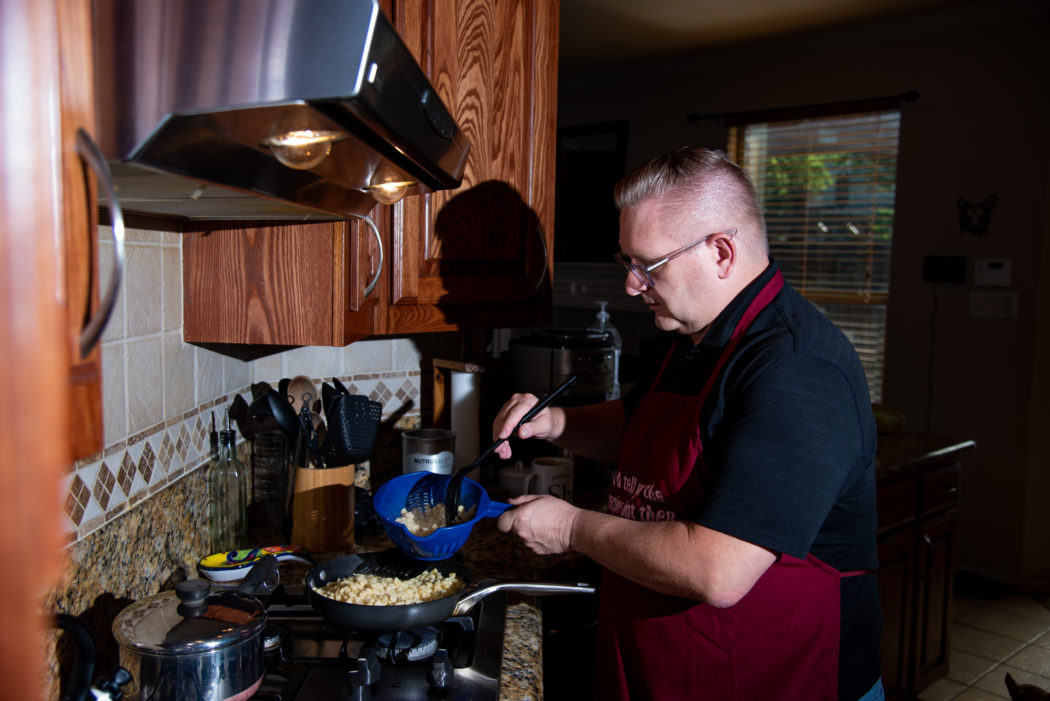
Sandor Korponai pours noodles into a pan to cook further at his home. Photography by Emil Lippe.
If you’re walking in Old East Dallas and smell the warm aroma of onions and garlic cooking, along with a generous dash of paprika, chances are you’re in the vicinity of Sandor Korponai’s place. His Hungarian dishes are tasty, but they also come with a side of family memories and a large helping of history.
Korponai works long days in global financial technology and often cooks to unwind. He thinks of his paprika chicken and noodles as comfort food, not only for the flavors but for the connection it brings to his ancestors.
In 1956, Hungarians took to the streets to protest the repressive communist regime and Soviet influence in the country. During the revolution, Korponai’s grandfather ended up in a prison camp outside of Budapest, but he managed to escape and return to the small town where he lived with his family.
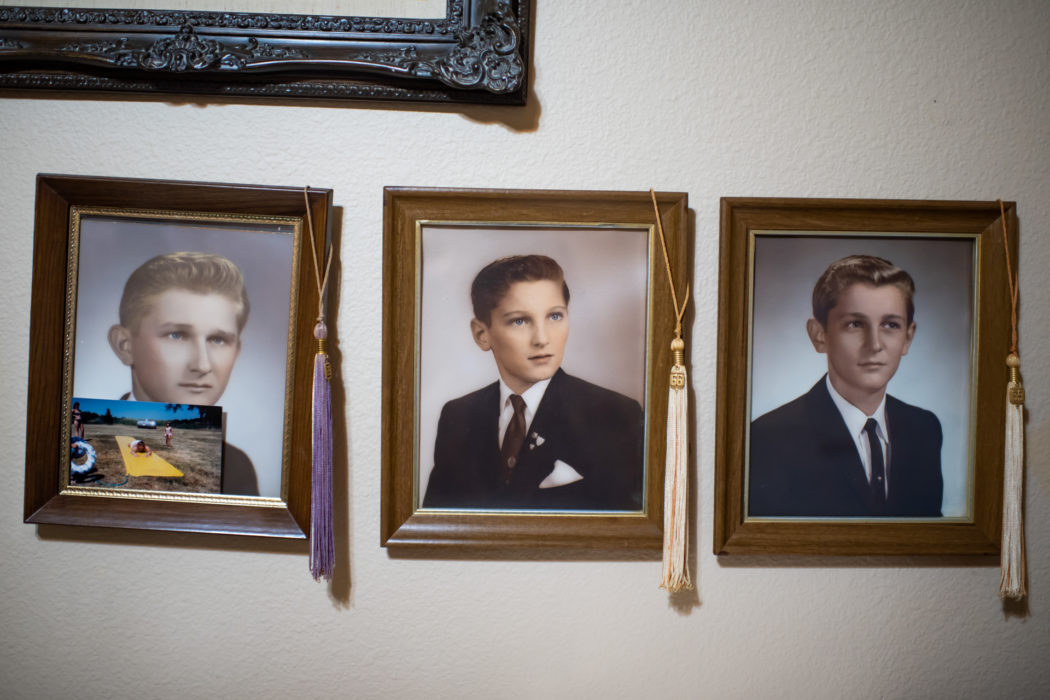
From left, portraits of Sandor’s father, and two of his uncles hang on the wall of his office at his home. Photography by Emil Lippe.
“My grandmother had had enough,” says Korponai. The family, including Korponai’s father and two uncles (ages 10, 8, and 6 at the time) escaped the country on one bicycle, traveling about 20 miles to Austria, where they found refuge at a Catholic nunnery.
As refugees, they were sent to London and while there, Korponai’s grandmother received word that her brother had made it to the United States. She started saving money and working on getting documents to go to America.
By 1957 they had the required paperwork and came to the United States aboard the RMS Queen Mary.
When they landed on Ellis Island and cleared customs and immigration, they headed to Milwaukee and obtained housing and jobs.
“My dad and his brothers went to elementary school and learned English, and my grandparents worked in different factories,” he says.
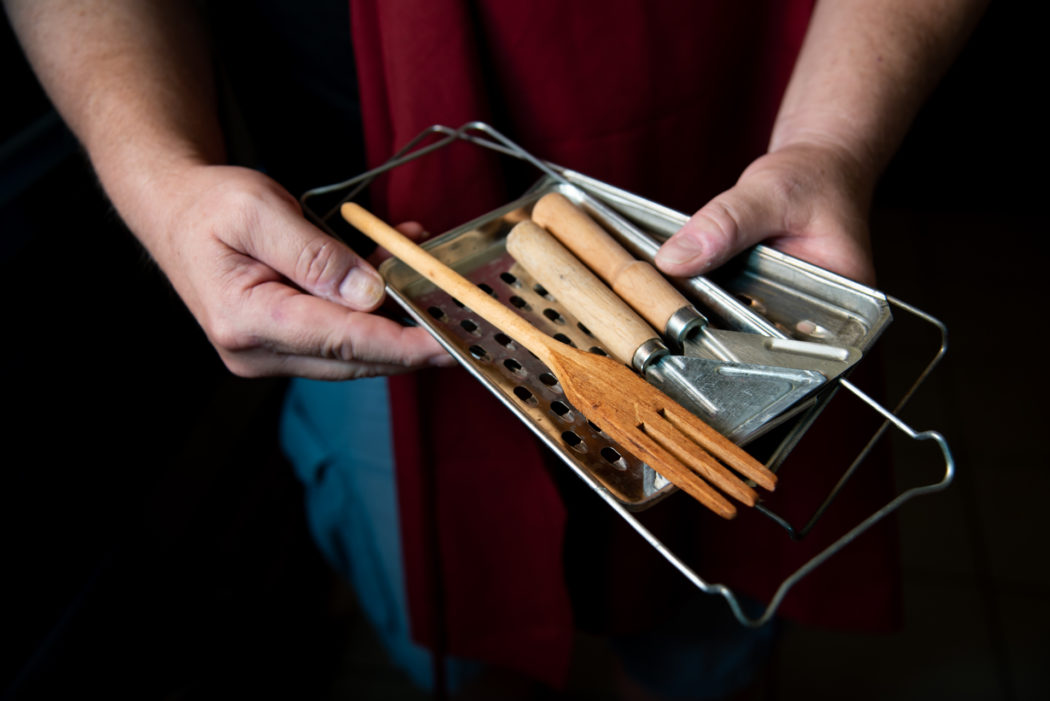
Sandor Korponai holds his grandmother’s cooking tools for making noodles at his home. Photography by Emil Lippe.
Born and reared in Milwaukee, Korponai has vivid memories of visiting his grandmother’s home and watching her cook.
“She would usually have something on the stove, some kind of Hungarian dish.” he says. “One of the things I’ve brought forward from Grandma’s house is there’s always a hot meal and a cold drink at my table.”
Bubbling in the pot might be chicken soup or one of Korponai’s favorite dishes: Hungarian paprikás chicken. A dish made with a whole chicken, stewed in a paprika and sour cream sauce.
“I particularly remember Grandma making the noodles for paprikás chicken. The noodles are called nokedli and she would start with a big bowl of flour, drop in a couple of eggs, some water, salt, and beat it all together. Notice, there was nothing measured, so that’s how I learned.”
He remembers, “She’d end up with this gooey kind of mess and then she would take out a utensil that looked like a grater. She had a special paddle she used for it and she would drop the dough that she made onto this grater and run her paddle across it and the noodles would drop into the boiling hot water. These noodles would come out of the hot water and she’d put them in a frying pan, maybe with a little butter or a little oil, and she would crisp them up for me.”
Korponai’s mom, who was born in the U.S., tried to learn the ins and outs of Hungarian cooking, but Grandma didn’t make it easy.
“She had to sneak watching my grandmother cook these dishes,” says Korponai. “Grandma would never tell you what was in whatever it was she was cooking. She’d just say ‘Oh … you know.’ And then she’d always try to sneak in what her special ingredient was, so you had to keep an eye on the old girl.”
His mom, and later Korponai himself, would take home as much of the recipe as they could remember, and try to cook it.
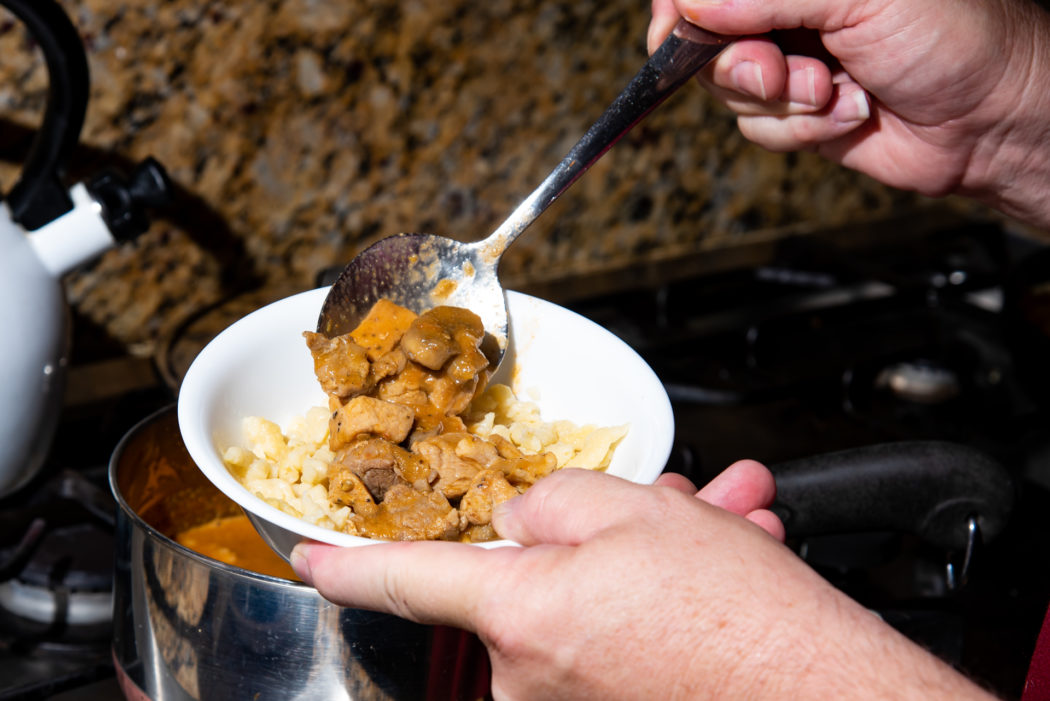
Sandor Korponai pours stew into a bowl of noodles to make pörkölt at his home. Photography by Emil Lippe.
Korponai apparently picked up a fair amount observing Grandma. He frequently cooks for himself and others and is often asked to prepare dishes for events.
“When I make paprikás chicken for friends and family, they all love it. They’ve said, ‘Oh my gosh, what did you put in here, how long did it take to make this, it’s my absolute favorite.’ When they hear about the simple ingredients that go into it and generally how quickly I can have it prepared, they just rant and rave.”
He adds, “I think everybody’s favorite is the noodles and sauce. If I’m preparing paprikás chicken, I’ll often have to double my noodle recipe and make sure I make extra sauce because they’ll bring dishes with them to take home leftovers.”
His magic ingredient?
“I will say that my secret is that my paprika comes from Hungary. I don’t buy just any paprika at the store.”
Fate and a daring escape on a single bicycle brought Korponai to eventually land in Old East Dallas where he lovingly honors his family history in his kitchen.
“Hungarian traditional food makes you feel warm and fuzzy inside. It gives you the comfort that you need after a long day,” he says. “The nostalgia and the smells of a Hungarian kitchen make you think about your heritage, your roots, where you came from.”
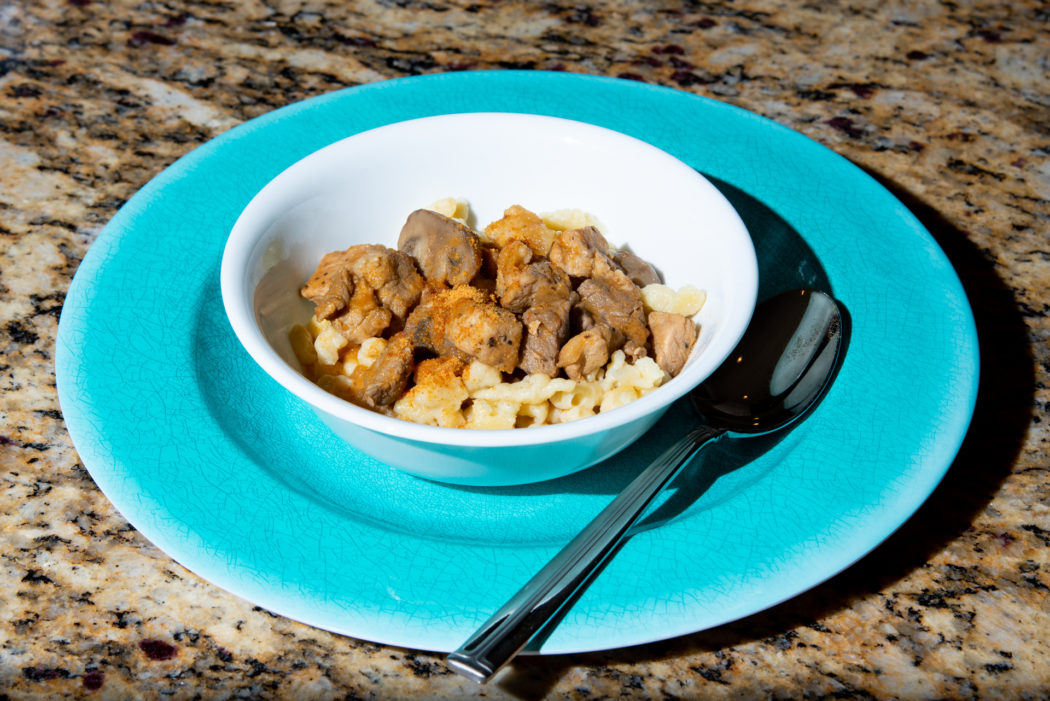
A bowl of pörkölt lies on a countertop at the home of Sandor Korponai at his home. Photography by Emil Lippe.





